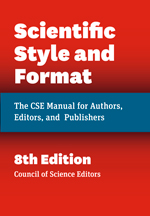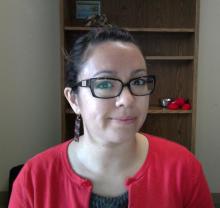Primary vs. Review Articles
BIOT 355L (Escobar) - Lab Report Overview
In this class, you are required to prepare a lab report to document and summarize the work you have done in BIOT 355. This guide will help you find the sources you need for the draft mini-report that is due in the middle of the semester.
What's Required:
- Background related to the major scientific questions/objectives. In this case, you should provide background on cellulases and their application in the production of biofuels/bioethanol. You will need to find appropriate sources (in the primary literature and the review articles or other reputable sources) and provide in-text references for these sources.
Primary vs. Review Articles (sciences)
Primary vs. Review Articles
So what's the difference between primary and review articles? You'll need some of each for this assignment.
- Primary articles (aka "empirical" or "research" articles) will present original research -- the authors of the articles are the same people who conducted the experiements.
- Review articles (aka "secondary sources" or "literature reviews") will present summaries of other people's research. The authors of review articles are typically summarizing all of the research on a particular topic or asking a question that can be answered by surveying already-existing literature.
Learn more about identifying primary sources in the sciences.
Finding Sources for Your Report
Searching the databases(BIOT 355)
1. Start with the articles provided to you by Dr. Escobar:
- Background source (not a research/review article):
- Primary articles:
2. Search the library databases
The recommended databases for this assignment are:
You may also want to search in these journal collections:
3. Tips on searching the databases
Here are some general tips on searching for articles for your report:
| Tip | Examples |
| Use keywords, not long search phrases |
Instead of searching for "background of cellulases and their application in the production of biofuels", breakdown your search into the main keywords: cellulases, cellulytic activity, biofuels, bioethanol |
| Use AND to combine different keywords | cellulases AND biofuels |
| Use OR to combine similar keywords | cellulases AND (biofuels OR bioethanol) |
| Use quotation marks (" ") to keep phrases together | cellulases AND (biofuels OR bioethanol) AND "E. coli" |
| Look for ways to limit your search in the database | You can often limit by type of article (primary/empirical or review/secondary), year of publication, or searching only within the abstract/title |
| Start with the articles provided by Dr. Escobar and look for related articles in the databases | Search for the Zhang or Hess article within a database and see if there are any related articles. This is sometimes called Related Records or Related Articles. |
Citing in CSE
BIOT 355L (Escobar) - CSE citations
Important Note: For BIOT 355, you will be required to follow the Name-Year format in CSE style.
CSE Citation Style (General)
What is CSE Style?
Each discipline uses a different citation style. In Biology, the most commonly used style is CSE. CSE uses three different formats: citation-sequence, citation-name, and name-year -- you will want to check with your professor to see which format they prefer.
Citation-sequence: Citations are included in a numbered list at the end of the paper, in the order in which they appear in the text. Within the text of your paper, use superscript numbers to refer to the corresponding citation in your citation list.
Citation-name: Citations are included in a numbered list at the end of the paper in a numbered list, in alphabetical order by author last name. Within the text of your paper, use superscript numbers to refer to the corresponding citation in your list.
Name-year: Citations are listed at the end of the paper in alphabetical order by author last name, but not numbered. Within the text of your paper, cite sources by using the author's last name followed by the year of publication in parentheses. For example: Jones (2005).
CSE Tips
CSE uses journal title abbreviations:
- To find the abbreviation, go to: https://www.ncbi.nlm.nih.gov/nlmcatalog/journals
- Search for your journal title by name
- Click on the record for your journal and copy/paste the ISO 4 abbreviation
A couple of examples:
|
Journal Article |
Author AA, Author BB. Article title. Journal Abbrev. Year;volume(issues):pages. URL (if any). doi (if any). |
|
Newspaper/Magazine Article |
Author AA. Article title. Newspaper Title. Year Mo Date. URL. |
|
Webpage |
Author AA, Author BB. Title of homepage/website. Place of publication: Publisher; Date of publication [dated updated; date accessed]. URL. |
CSE Guides & Resources
These resources may provide you with additional help and examples.
- CSUSM Quick Guide to CSE Style
- Need help? Watch this tutorial on how to cite in CSE.
- Scientific Style and Format Citation Quick Guide (Univ of Chicago Press)
- Council of Science Editors Documentation Style (The Writing Center @ the University of Wisconsin - Madison)
- Scientific Style and Format: The CSE Manual for Authors, Editors, and Publishers (Northwest Missouri State University B.D. Owens Library)
CSE Manual at CSUSM Library

The most current version (eighth edition) of Scientific Style and Format: The CSE Manual for Authors, Editors, and Publishers was published in 2014.
Library copy (T11 .S386 2014)
The CSUSM Library owns a copy of the official CSE manual that you can consult in person.
Not sure how to write your citations?
Get started with this flow chart created by CSUSM librarians.
How to Write a Citation: a flowchart
Sitewide guides menu
Talitha Matlin

760-750-4342
KEL 3423
